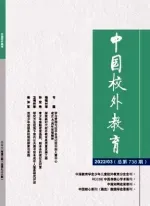Interlanguage Error Analysis and Teaching for English Majors
◆谭宏伟
(长春工业大学外国语学院)
Interlanguage Error Analysis and Teaching for English Majors
◆谭宏伟
(长春工业大学外国语学院)
Interlanguage is a unique and changing language system in the process of the second language learners learning the target language.With the improvement of learning,interlanguage gradually approaches to the correct form of target language.However,due to the differences between target language and native language,errors will inevitably occur in the course of study.Error analysis requires language teachers to analyze the language learners’errors and guide teaching the language.
Interlanguage Error Analysis Teaching for English Majors
Language learners grasping the target language must experience the procedure of error analysis and interlanguage.
I Error Analysis
Error analysis is the systematic study of language learners’errors and the resources of these errors to reveal language learners’interlanguage system in order to understand the procedure and regular of second language acquisition.
1.Procedures of Error Analysis
(1)Collection of samples of learner language.
(2)Identification of errors.It needs to be carried out from the aspects of grammar and communication.
(3)Description of errors.This step refers to reconstruct the sentence of target language from the meaning of interlanguage the learners wanted to express and make a comparison of these two sentences.
(4)Explanation of errors.
(5)Evaluation of errors.This step is mainly from the perspective of listeners and readers to tell the degree of the errors influence the understanding.
2.Error Types
There are two types of errors:errors of competence and errors of performance.In the aspect of errors of competence,intralingual errors and interlingual errors are included.In the division of errors,the difference between errors of competence and errors of performance is based on the linguistics theories.Richards(1971)proposes developmental errors when accepting intralingual and interlingual errors.He points out that the developmental errors are the hypothesis of all kinds of language rules under the limited knowledge of target language.
3.Sources of Errors
The sources of errors are reflected in six aspects according to the classification of the errors by Corder.They are in the following:
(1)Interlingual interference.Interlingual interference refers to the native language affecting the learning of a foreign language.
(2)Intralingual interference.Intralingual interference refers to make an incorrect hypothesis according to the acquired,limited and incomplete language knowledge and experience of language learners and induce the structure of divergent rules.
(3)Cultural interference.
(4)Communicative strategies.
(5)Cognition and personality.
(6)Errors by teaching.The external factors mainly refer to the classes,the teaching materials and the teachers.
II Theory of Interlanguage
The definition of interlanguage is"Interlanguae is a transitional language between native language and target language which is set by the second language learners."It is developmental on the process to target language.There are five cognition processes of setting interlanguage:language transfer,transfer of training,second language learning strategies,second language communicative strategies and overgeneralization.There are three natures of interlanguage:
(1)Permeability.It refers that interlanguage is permeated by the rules or forms of language learners’native language and target language,which includes positive and negative transfer and overgeneralization;
(2)Fossilization.It refers to the state that interlanguage can not reach the level of target language exactly in general;
(3)Repeatability.This nature means that the process of interlanguage to target language is repeated and intricate.
III Implications for English Teaching
Some findings of IL error distribution analysis have instructional value in English language teaching.The analysis of IL errors here has certain instructional value in teaching for English majors.
First,L2 learners'language knowledge should be reinforced in English teaching.L2 learners still need to strengthen their language basics which are closely related to lexical learning.
Second,L2 learners'writing skill should be reinforced.
Third,L2 teachers should distinguish"mistakes"from"errors".When recognizing an error or errors in students'work,L2 teachers should strengthen the knowledge involved by referring to the tactics or techniques if applicable.Mistakes reflect occasional lapses in performance,they occur because,in a particular instance,learners are unable to perform what they know.In this case,L2 teachers should consciously create much more contexts of performance.
In short,error analysis yields insights into the language learning and teaching processes.On the one hand,English teachers can know about error sources and error types of L2 learners made in their interlanguage production,find the weak points in L2 learners’learning process and then help L2 learners adopt better learning strategies and methods.
[1]Cook V.Second Language Learning and Language Teaching[M].Beijing:Foreign Language Teaching and Research Press,2000.
[2]Ellis R.Second Language Acquisition[M].Shanghai:Foreign Language Education Press,2000.
[3]Yule G.The Study of Language[M].Beijing:Foreign Language Teaching and Research Press,2000.
[4]Zamuner T.S.Input- Based Phonological Acquisition[M].New York,NY:Routledge,2003.
[5]杨连瑞,张德禄.二语习得研究与中国外语教学[M].上海:上海外语教育出版社,2007.

